 username@email.com
username@email.com
In this lesson, you will review the characteristics and types of prokaryotes.
The first organisms to live on Earth were forms of simple, single-celled organisms.
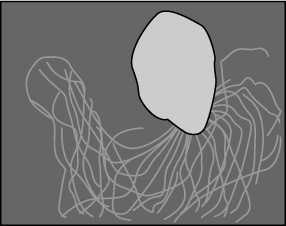
Archaebacteria
Archaebacteria are the oldest known living things and are often grouped in their own eponymous kingdom.
Among these ancient organisms were methanogens, which synthesize methane from carbon dioxide and hydrogen gases (abundant substances in Earth’s early days), thermoacidophiles, which love living in extremely hot and acidic environments, and halobacteria, which thrive in highly saline conditions.
These proto-prokaryotes differed from the general prokaryote blueprint in several ways:
Relatives of the archaebacteria may be found today living in extreme environments, such as in and around deep-sea vents and hot springs and geysers.
The archaebacteria gave rise to single-celled prokaryotes. Prokaryotes are classified in the Kingdom Monera. Their most singular characteristic is their lack of a membrane-bound nucleus and membrane-bound organelles. In prokaryotes, the single, continuous, usually circular, strand of DNA (naked DNA) floats freely in the cytoplasm.
Other characteristics shared by nearly all prokaryotes include:
Generally, prokaryotes have one of four characteristic shapes:
Two bacteria that have a unique shape are the spirochetes (e.g., Terponema pallidum, which causes syphilis), which can be incredibly long, and rickettsiae (e.g., Rickettsia prowazeki, which causes typhus), which are the smallest cells known.
Most prokaryote locomotion is accomplished by the rapid beating of the pili that often completely surround the cell. Some prokaryotes have one or more flagella. Both pili and flagella are made of unique proteins (flagellin and pilin).
Reproduction is usually by binary fission, or cell division. The complex series of steps in mitosis are not needed among prokaryotes because of their simplified, single-stranded DNA. However, lack of precaution frequently leads to mutations in the “quick and dirty” binary split. For many prokaryotes, including infectious bacteria, a new generation may arise every 15 minutes. Combine the short generation time with a reasonably robust occurrence of mutations, and you can see why bacteria quickly develop resistance to antibiotics.
Some prokaryotes reproduce via budding, in which a genetically identical offspring develops out of the parent’s body and eventually buds off from the parent. Some prokaryotes are able to generate spores that remain dormant, but viable, for long periods. The spores of the bacterium Clostridium botulinum, which causes botulism, can survive hours of boiling, and still kill you.
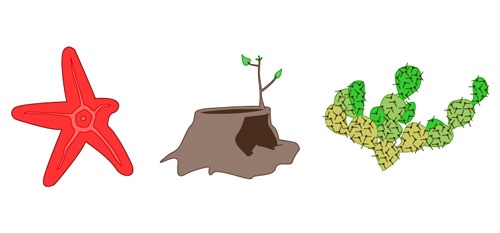
Example of Budding Process
Most prokaryotes are heterotrophs, mainly consuming dead organic matter. It is to bacteria that we owe the existence of organically rich topsoil, for bacteria decompose organic matter in soil. Some heterotrophic bacteria live symbiotically in hosts, either as commensals, parasites (some pathogenic), or in a mutualism that benefits both organisms. There are even heterotrophic bacteria that are parasites on other bacteria.
Some prokaryotes are chemotrophs that can use inorganic materials as a source of energy. Archaebacteria are largely chemotrophs, particularly the methanogens that still thrive in anaerobic environments. One group of chemotrophs, vital to the nitrogen cycle, transforms inorganic nitrogen and makes it available to plants.
Eubacteria are photosynthetic. In one group of eubacteria, the sulfur bacteria, energy derived from the electrons in sulfur atoms take the place of the electrons derived from water in plants.
Nonsulfur photosynthetic bacteria are the ancient cyanophytes, or cyanobacteria, to which we owe an enormous debt. Cyanophytes contain chlorophyll a and break down water during photosynthesis (as do modern plants). In the process, they release oxygen. The countless cyanophytes that lived in the Earth’s early oceans contributed the oxygen to our atmosphere that we, and most organisms, require to survive.
It is probable that cyanophytes gave rise to the first eukaryotic algae.
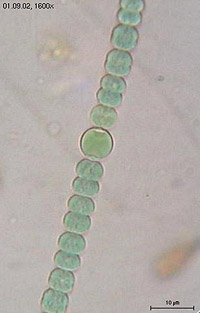
Cyanobacteria
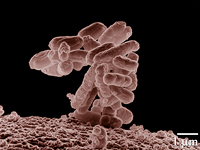
E. Coli
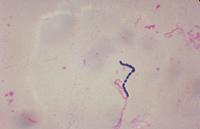
Streptococcus
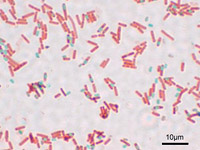
Bacillus
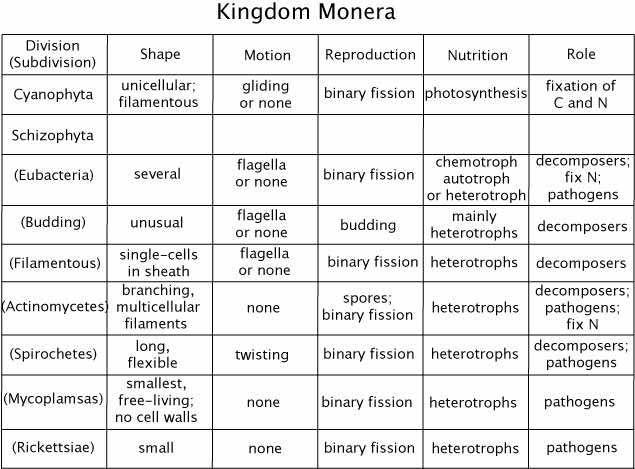
Which of the following is a characteristic of Archaebacteria?
The correct answer is C. Archaebacteria have unique electron transfer coenzymes that take the place of NAD and FAD. The presence or absence of flagella is not characteristic of this classification of organisms, so A is not correct. Only one type of archaebacteria, the halobacteria, thrives in saline conditions, so B is incorrect. Similarly, only methanogens synthesize hydrocarbons (methane), so D is not correct.
The correct answer is B. Most prokaryotes reproduce asexually via cell division, or binary fission. Fragmentation is the regeneration of a lost part of the organism, as in starfish, so A is not correct. Some prokaryotes do reproduce via budding, but it is not common, so C is incorrect. Similarly, some prokaryotes produce spores, but this is fairly rare among prokaryotes, so D is not correct.
The correct answer is D. Most prokaryotes live in soil, where they ingest and decompose decaying organic matter and release it into the soil. Some heterotrophic prokaryotes may consume unicellular autotrophs, but this is not widespread, so A is incorrect. Similarly, some heterotrophic prokaryotes may ingest others of their kind, but this is not common, so B is incorrect. Chemotrophs do metabolize inorganic substances, but they are a small sector of the prokaryotic community, so C is not correct.
The correct answer is D. Cyanophytes are photosynthetic (like all eubacteria) marine eubacteria that put the oxygen into our atmosphere. Rickettsiae are pathogenic, nonphotosynthetic prokaryotes, so A is not correct. Vibrios are a category of prokaryotes based on their incomplete spiral shape. They are not photosynthetic and so are not eubacteria; thus, B is incorrect. Mycoplasmas are heterotrophic, not autotrophic, prokaryotes, so C is not correct.